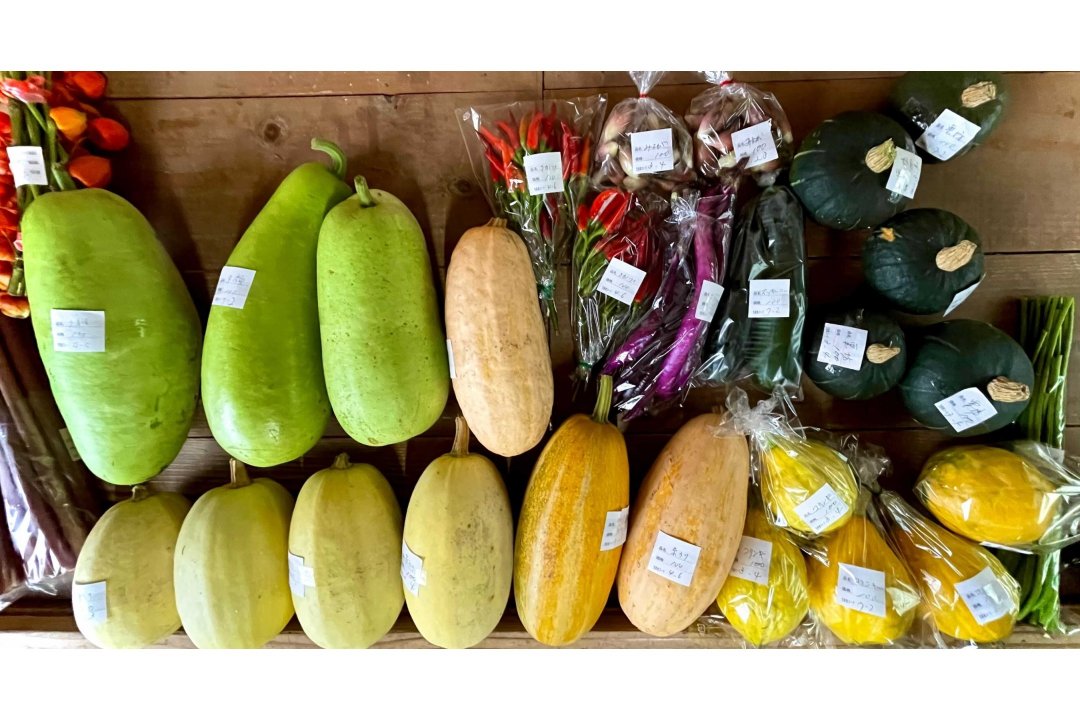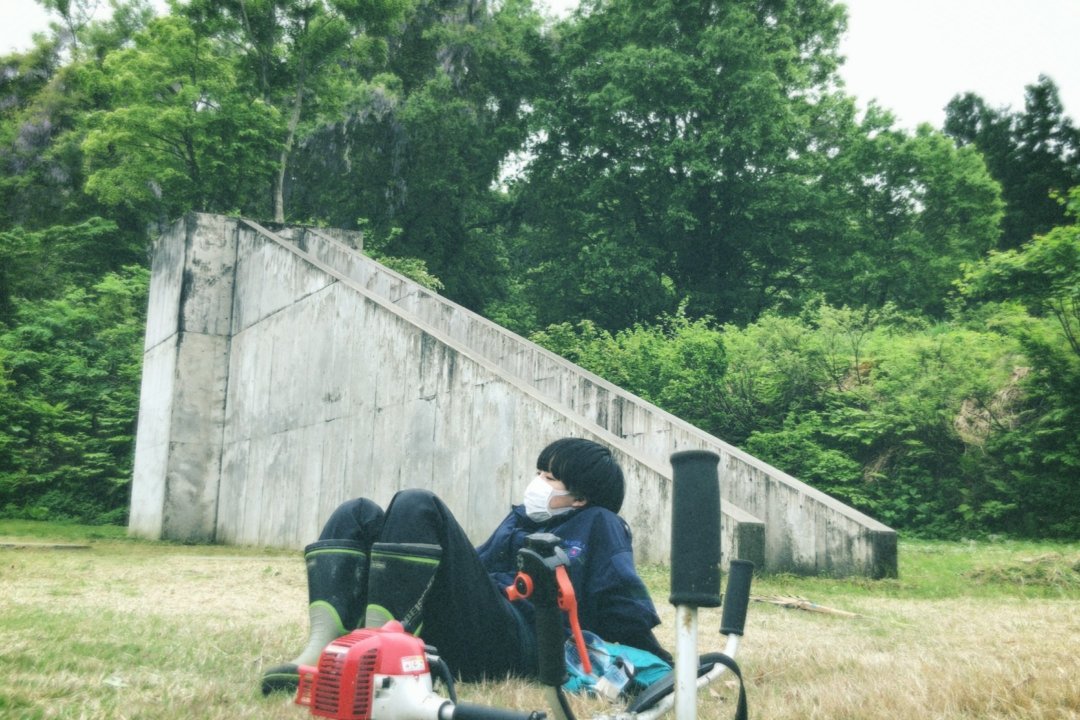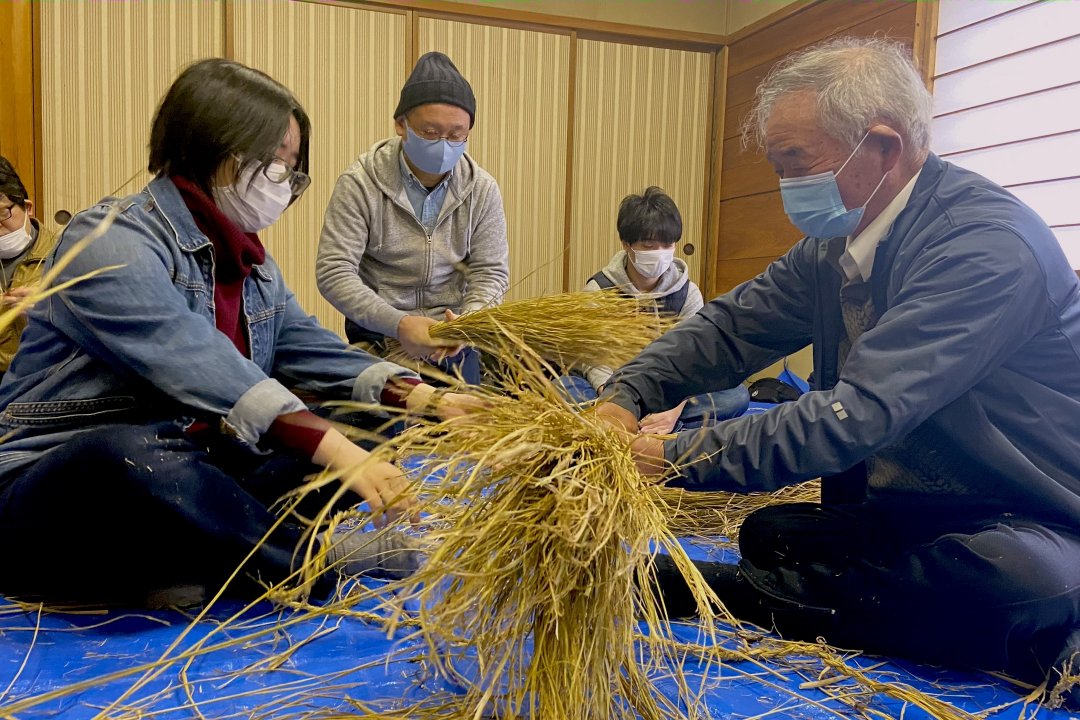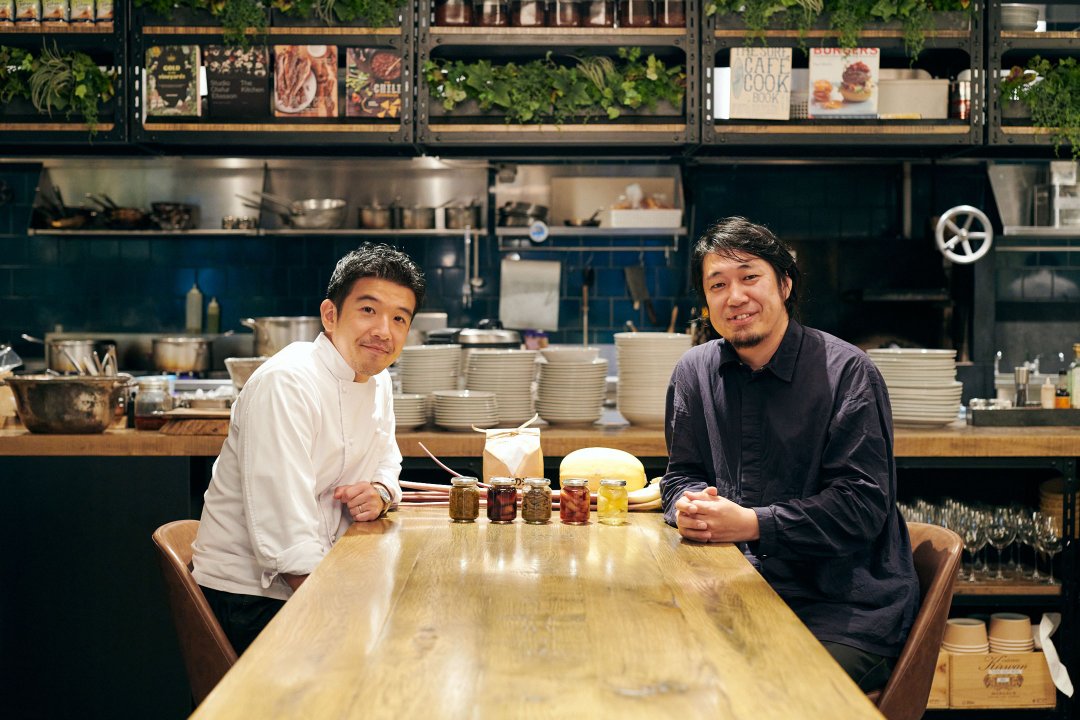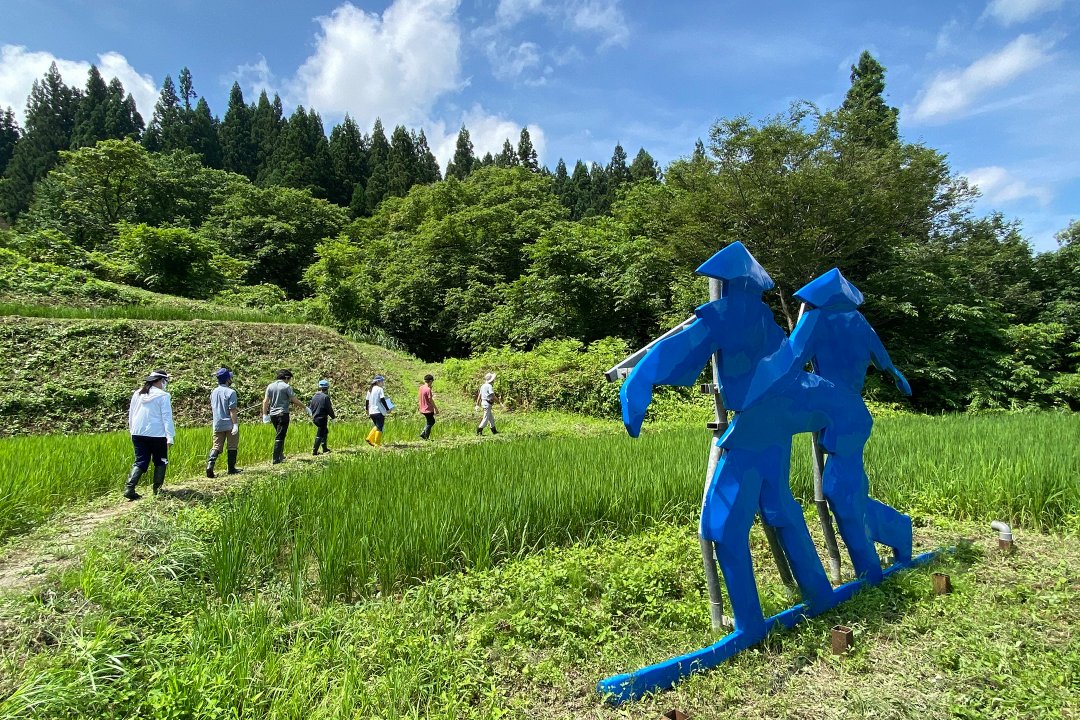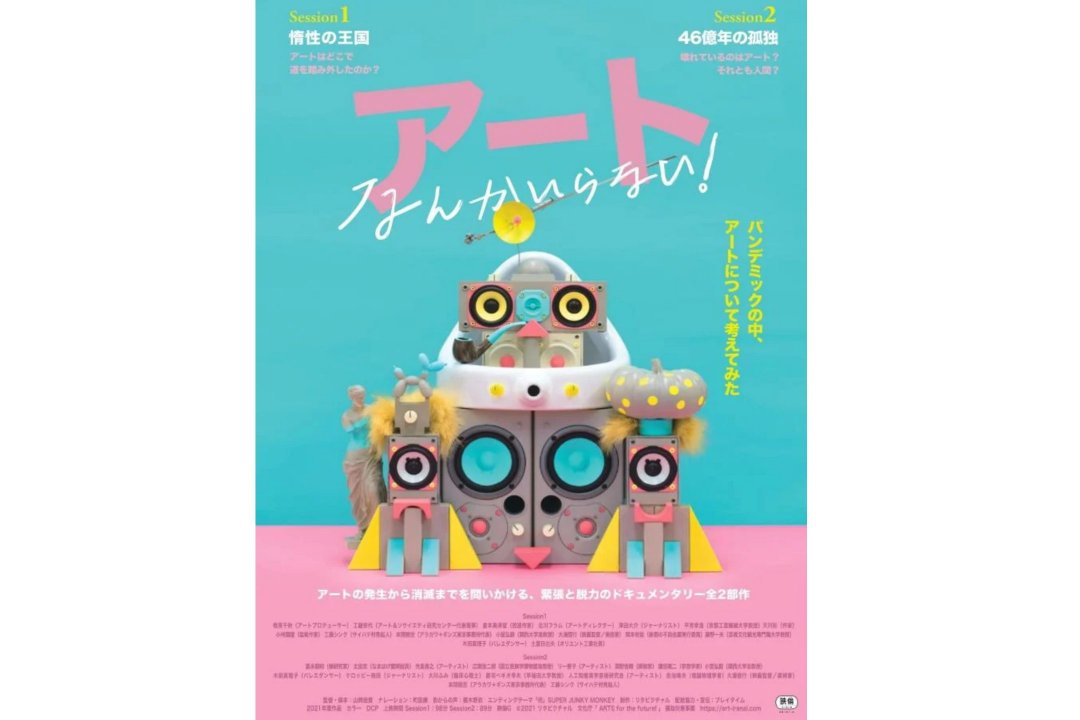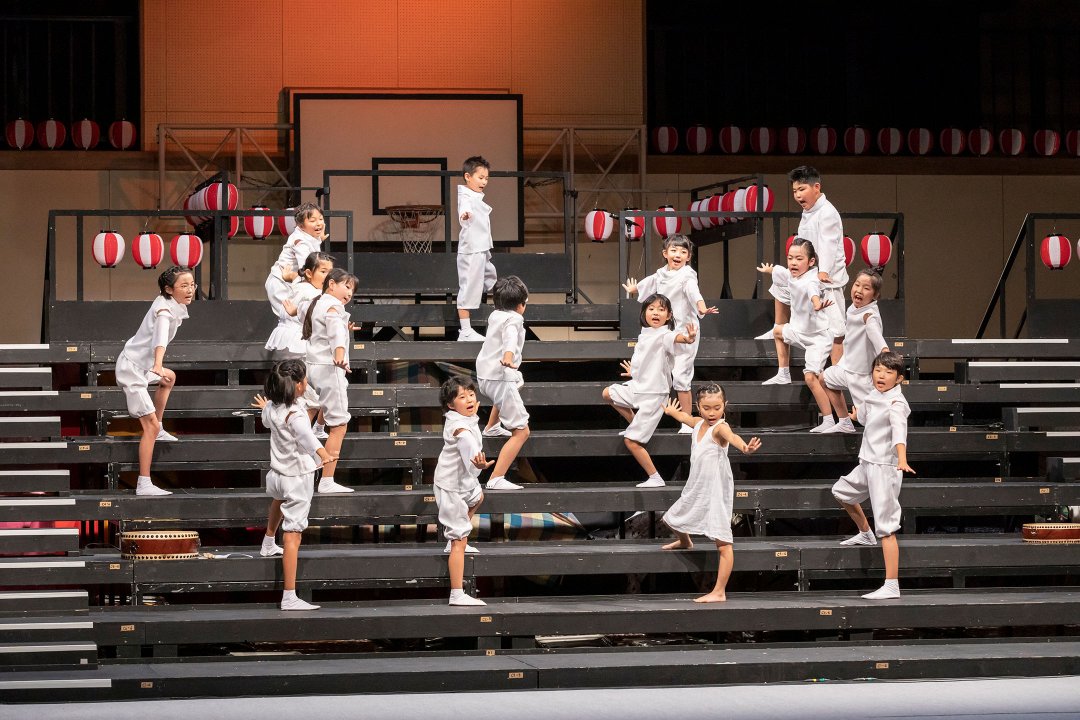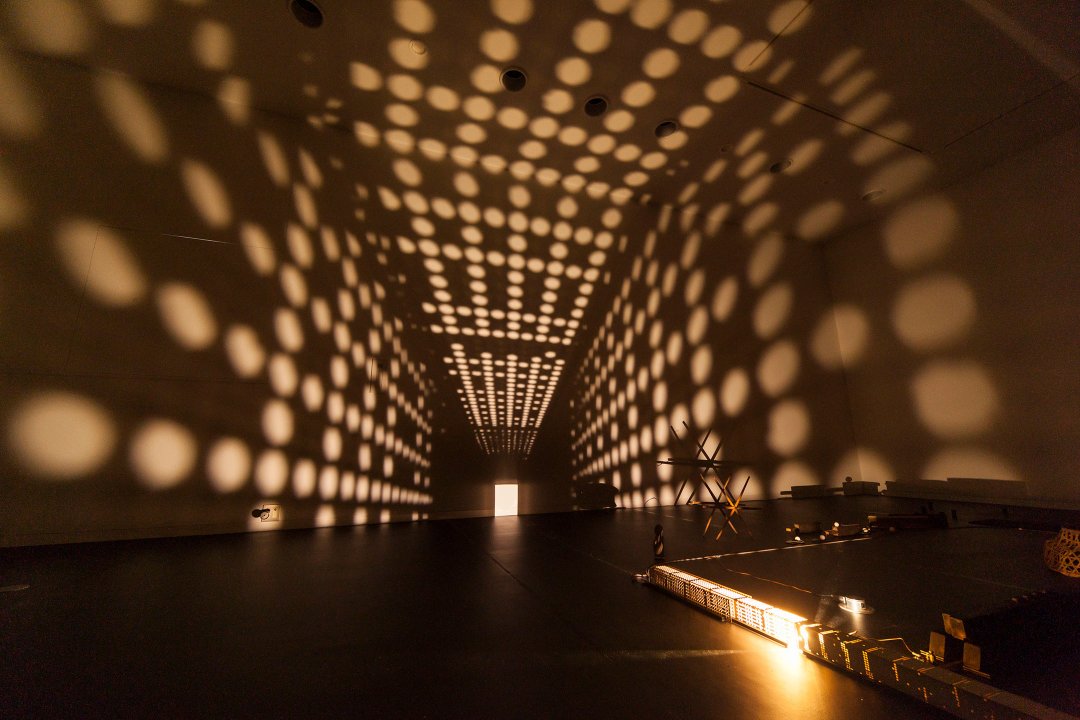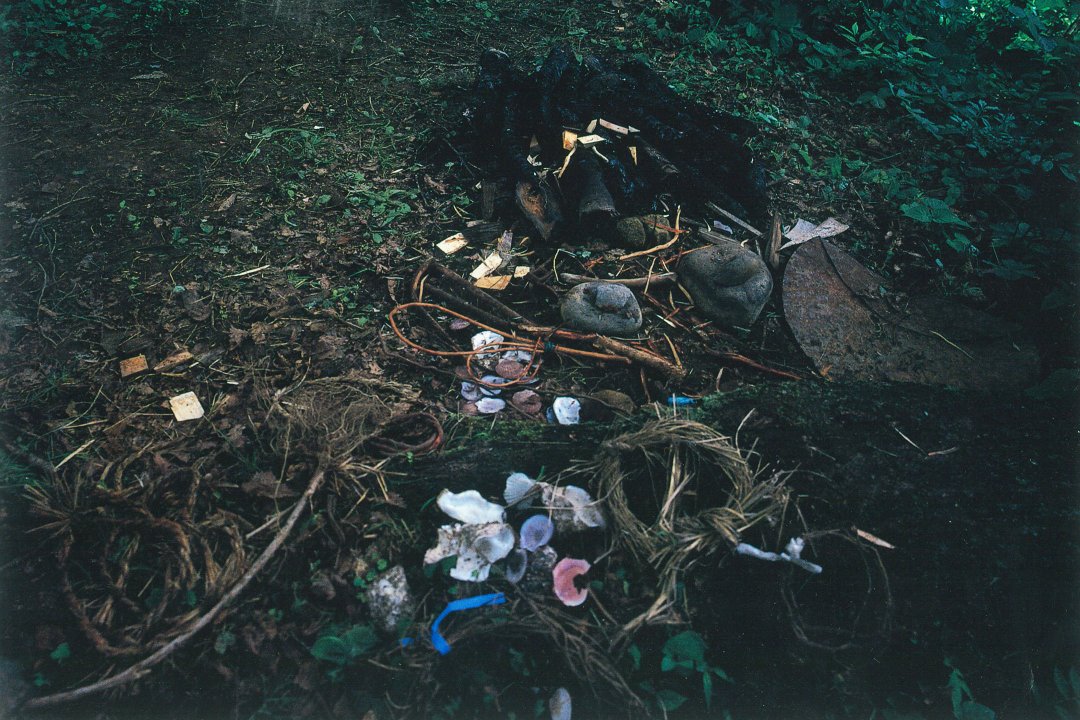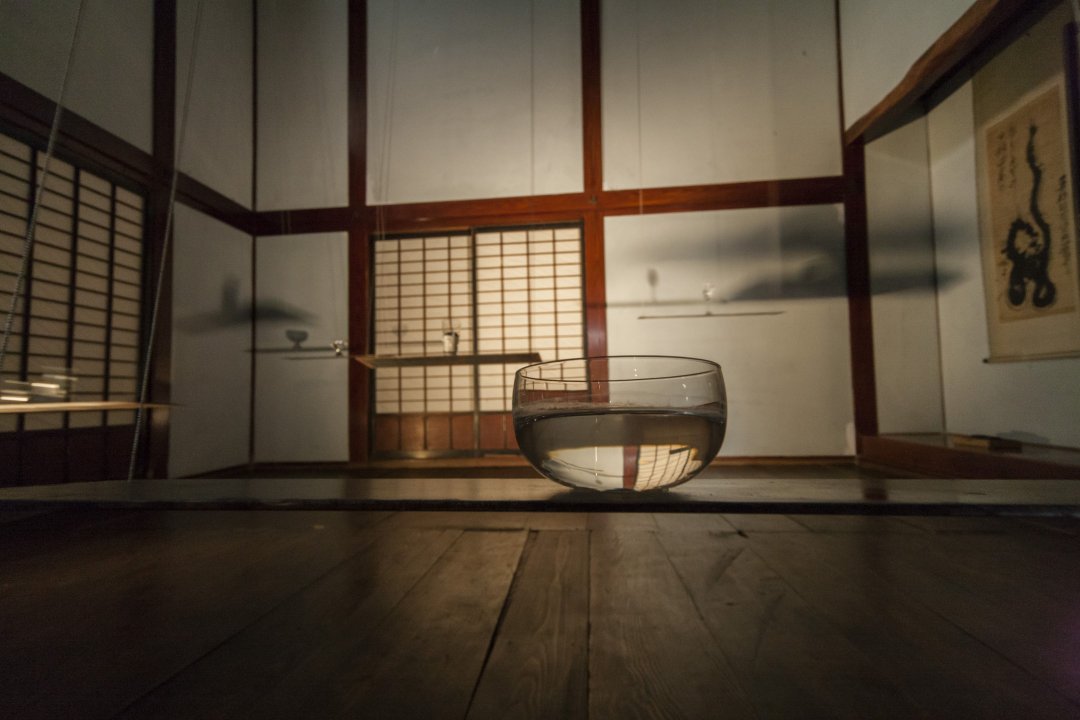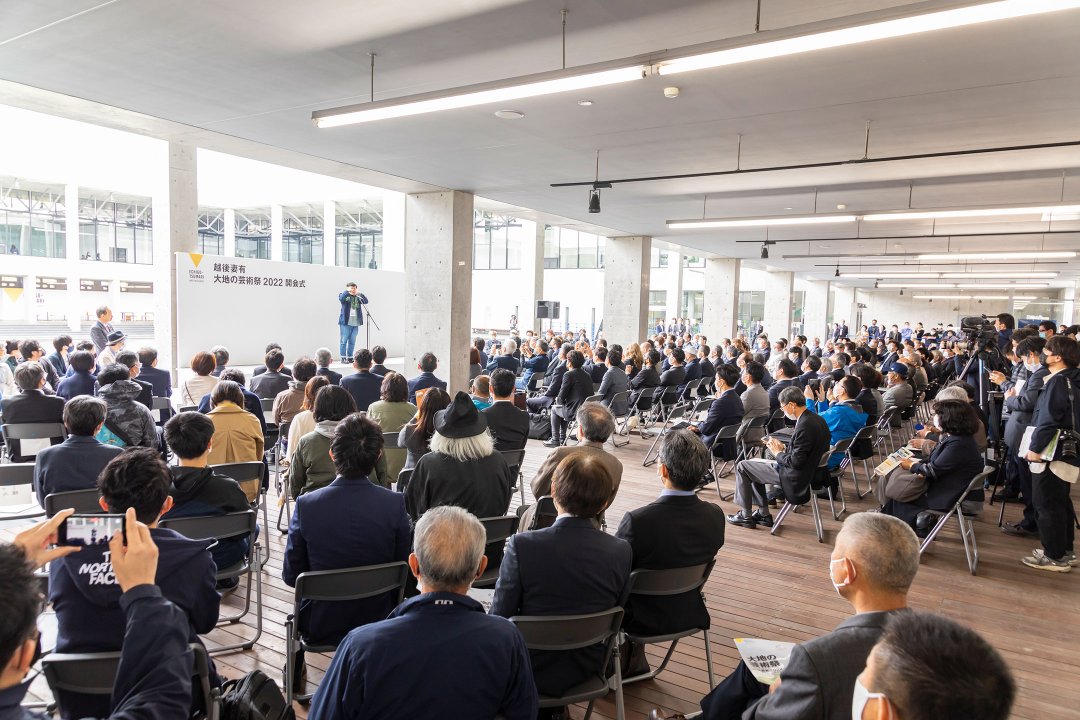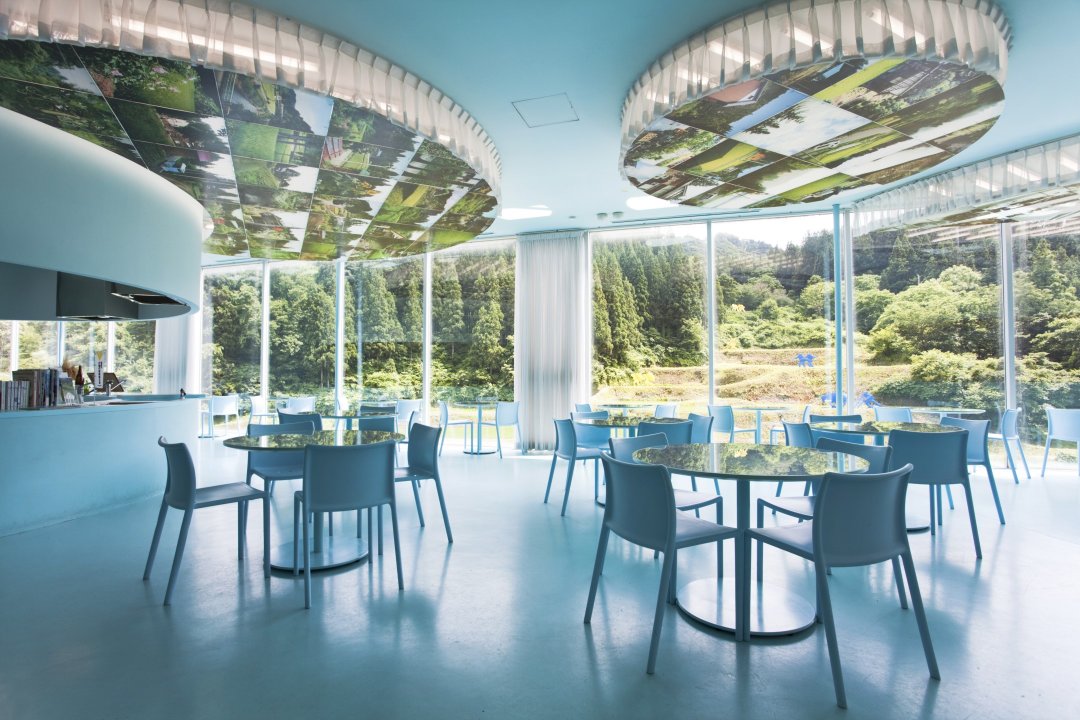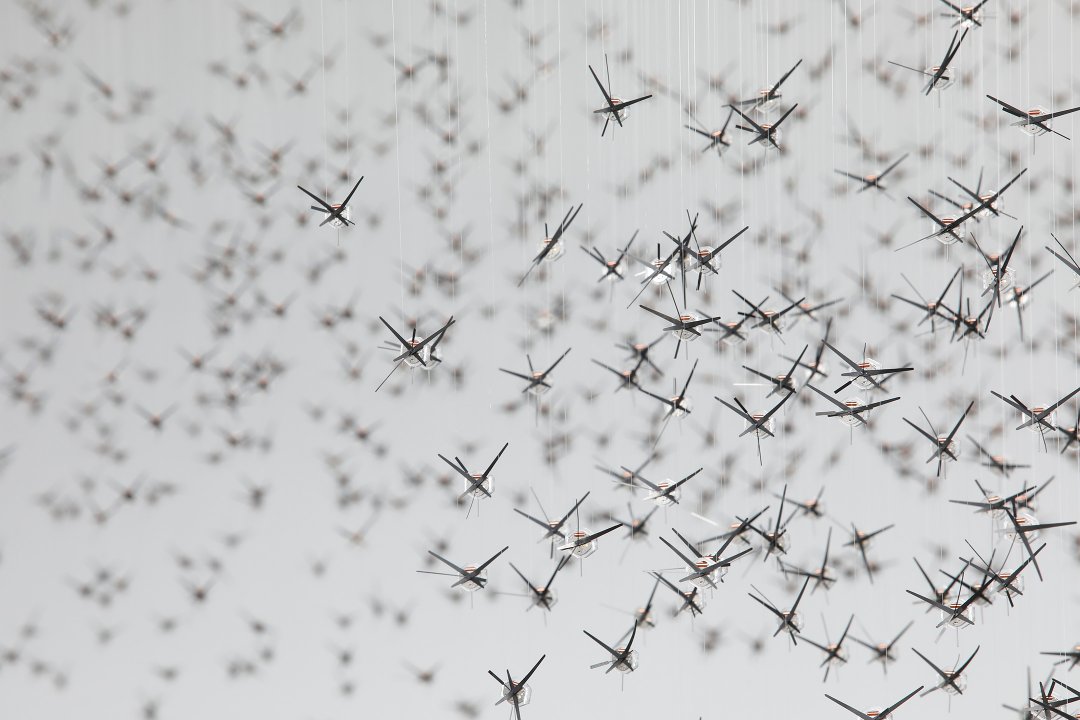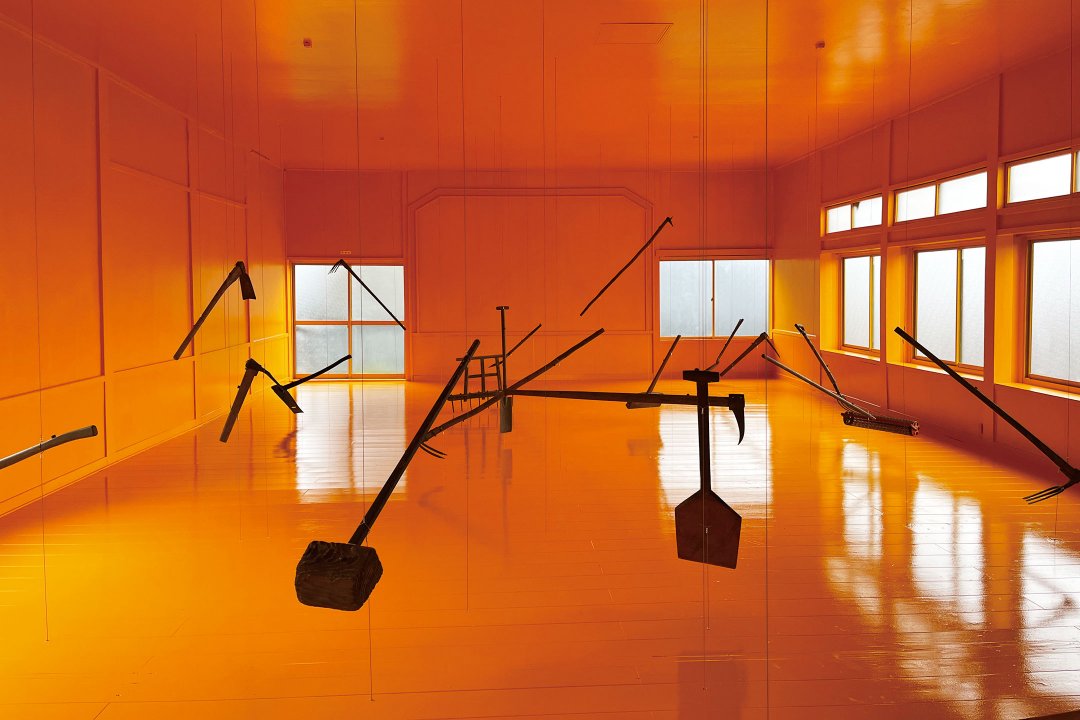Thinking 21st century art in the world from Niigata
Echigo-Tsumari Art Field - Official Web Magazine
Staff / From behind the scene of Echigo-Tsumari
TASHIMA Seizo - art that doesn't exclude living creatures
28 April 2021
There was still snow in the shade at the end of April even a warm sun shone through. Fukinoto (mountain vegetable) popped their head out and covered the entire bank behind the Museum of Picture Book Art and you could almost hear their quiet chant that went “spring has arrived!” together with the voices of frogs who woke up from long winter sleep and little birds.
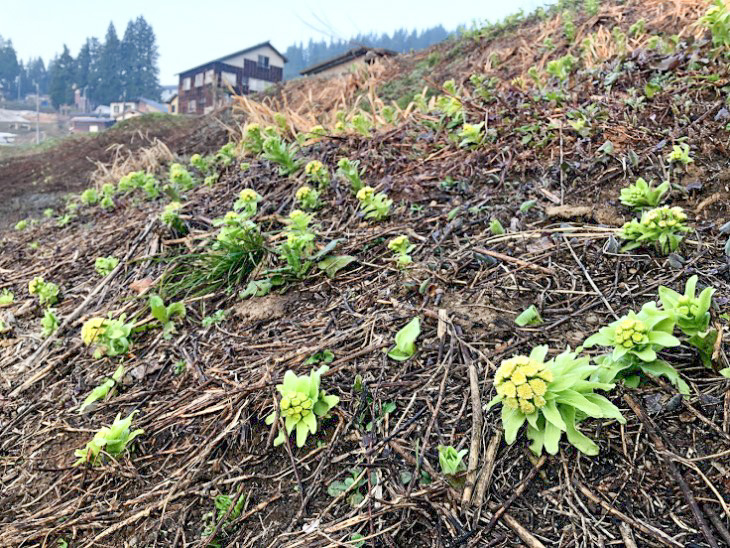
Fukinoto opening up over the entire bank
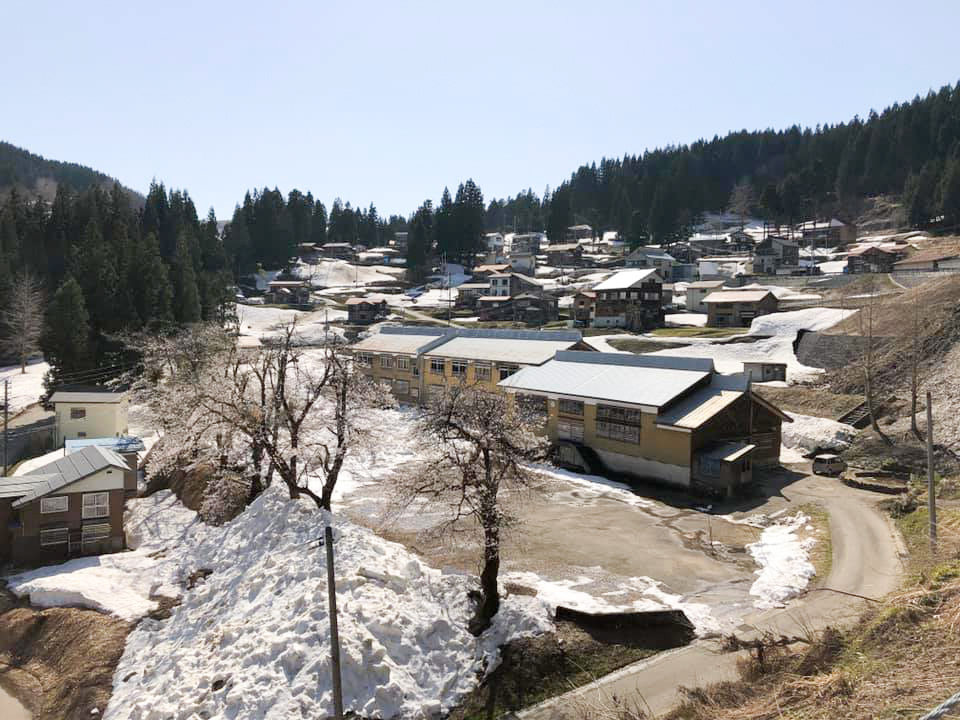
Spring in the Hachi village. Here you can enjoy snow and sakura at the same time (photo taken in mid April)
A museum where goats exist
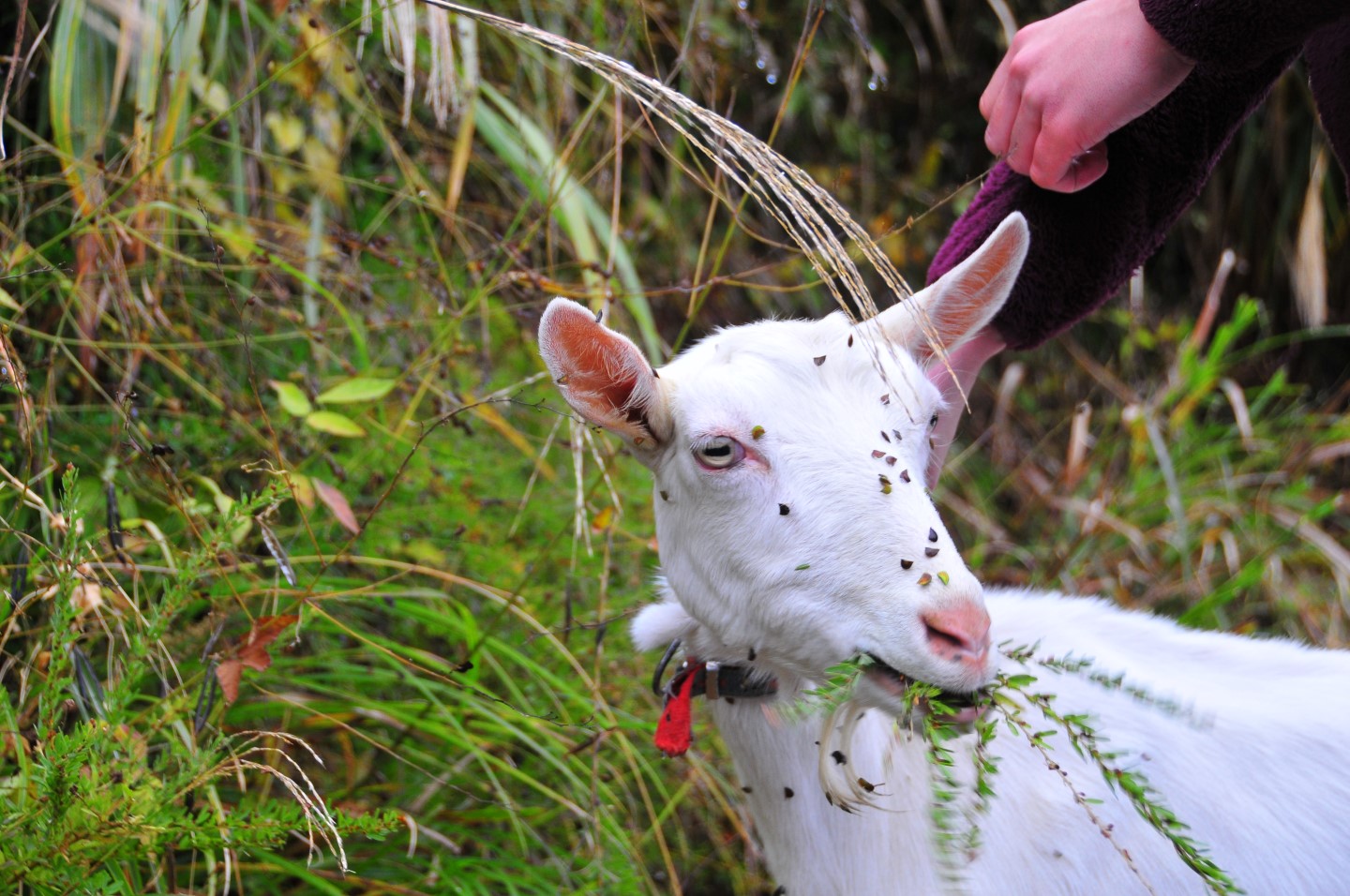
As April begins, local villagers ask us “How is Shizuka. When does she return?”. It is a season for Shizuka, the goat, who resides at the museum from spring to autumn every year to give birth to her kids. It makes us so happy to see that everyone in the village cares about her. The museum where goats exist – is the idea in TASHIMA Seizo’s mind for a long time, even before the establishment of the museum. It has been seven years since Shizuka was welcomed as an important member of supporting the museum as we are today. (She is planning to return in mid May this year).
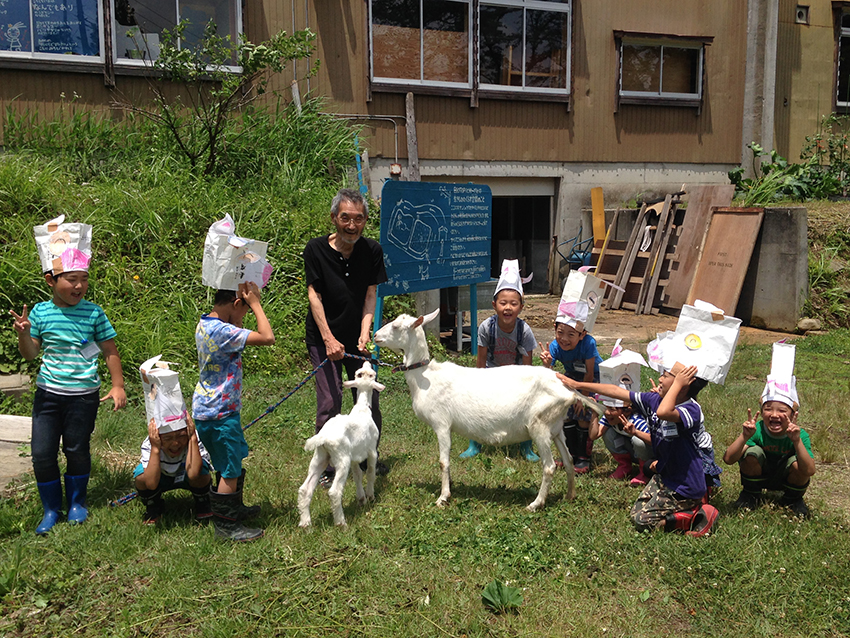
SEIZO Tashima with students of Abushima Primary School
Children learn the value of life as they spend time with the goats at Abushima Primary School. These goats are not just appeare when children learn “life study”. They are alternate text books in other subjects such as art and craft, Japanese, and mathematics. In recent years, people of the Hachi village have started to bring feed to the goats. The obachan (old ladies) pay regular visits by bringing goats’ favourite grasses. More people visit us during the time of sweet poteto harvest with their truck filled with those potatoes. Looking after goats at the museum plays an important role in engaging with community.
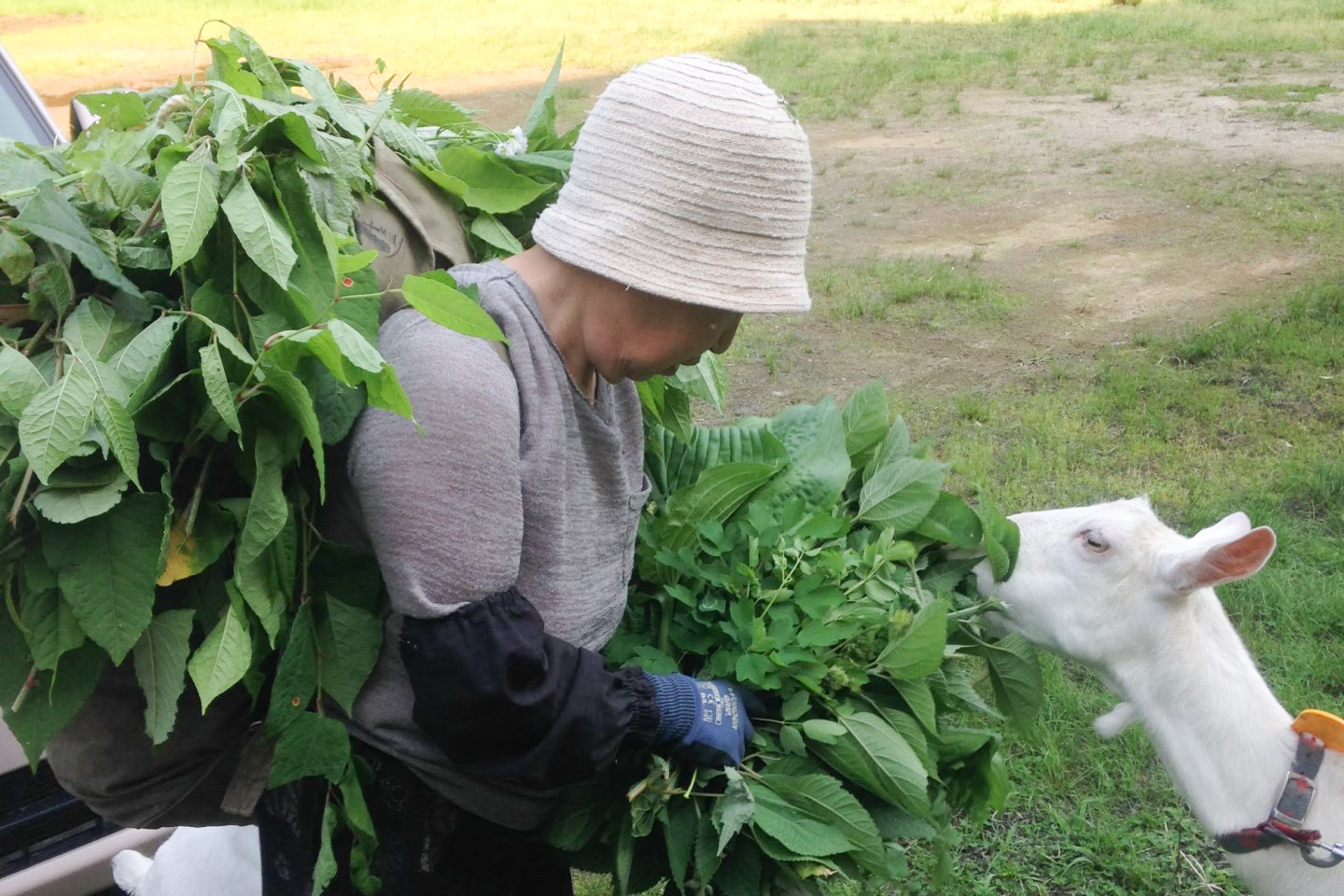
Local lady of the Hachi village bringing a basket full of feeds for the goat.
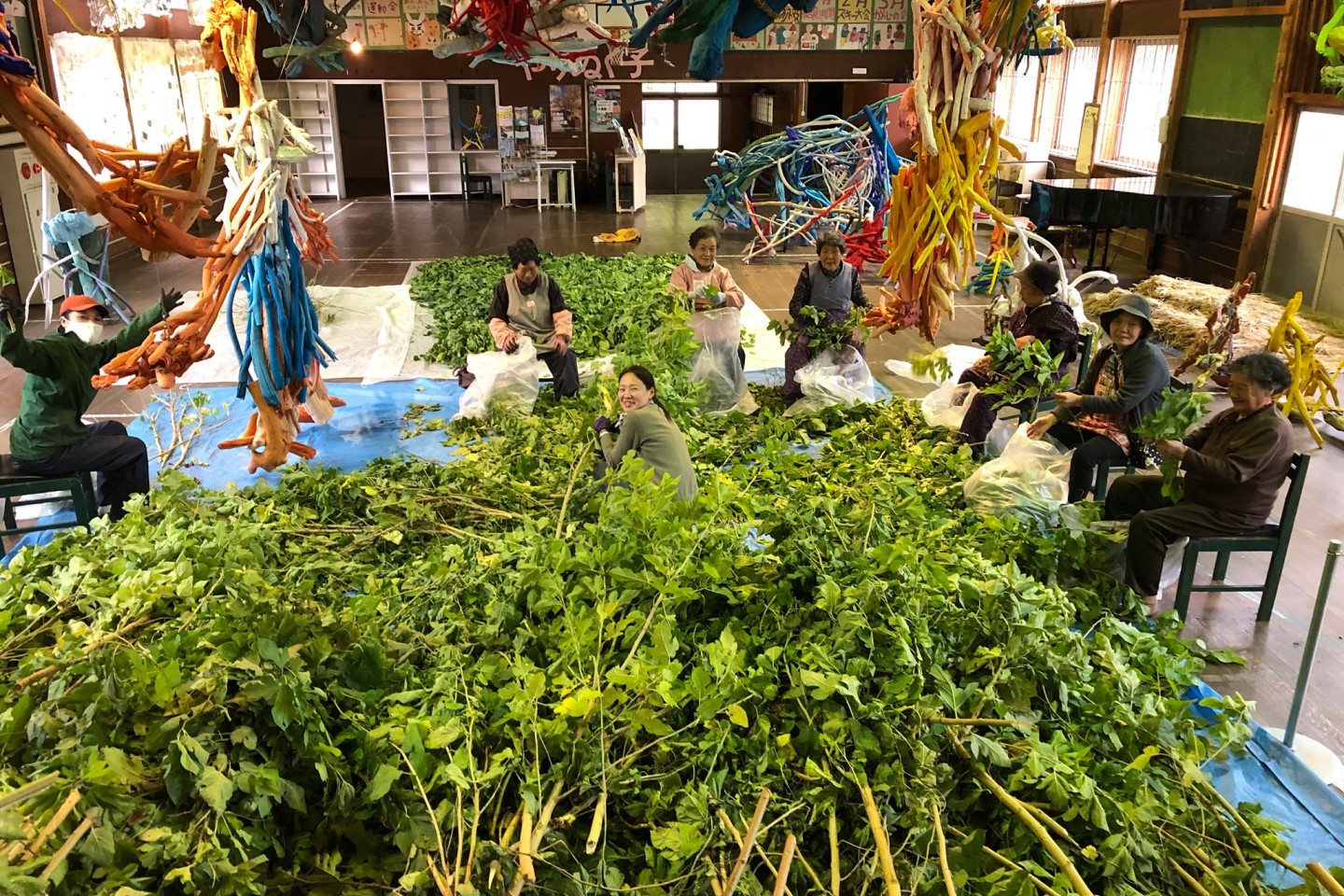
We received generous amount of mulberry growing in the area and we take leaves off from the stems, preparing for feed in winter by drying these leaves.
ー Note on the goat ー
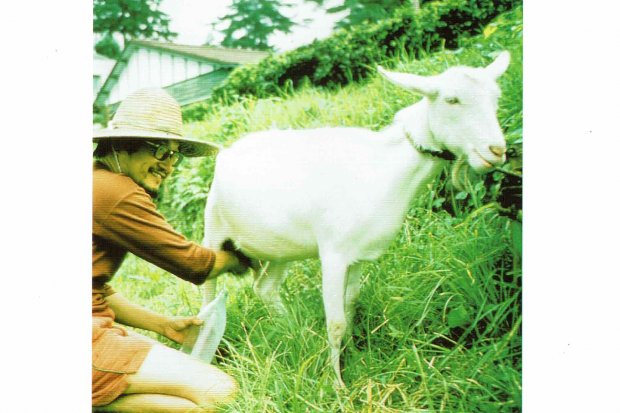
TASHIMA and Shizuka the goat
TASHIMA Seizo lived with goats when he lead self-sufficient life in Nishi Okutama in Tokyo from 1970s to 1980s. The name of the goat was Shizuka. He had to tell her to “be quiet (shizuka ni shiro)” all the time and eventually started to call her Shizuka. She provided a precious source of nutrition as Tashima family’s stomach didn’t work well with cow milk. Seven series of picture book called “Shizuka, the Goat” filled with stories about his life with Shizuka written in the form of diary were hugely popular when published. This is how the name for the mother goat in the museum was chosen as Shizuka.
With people of Hachi village
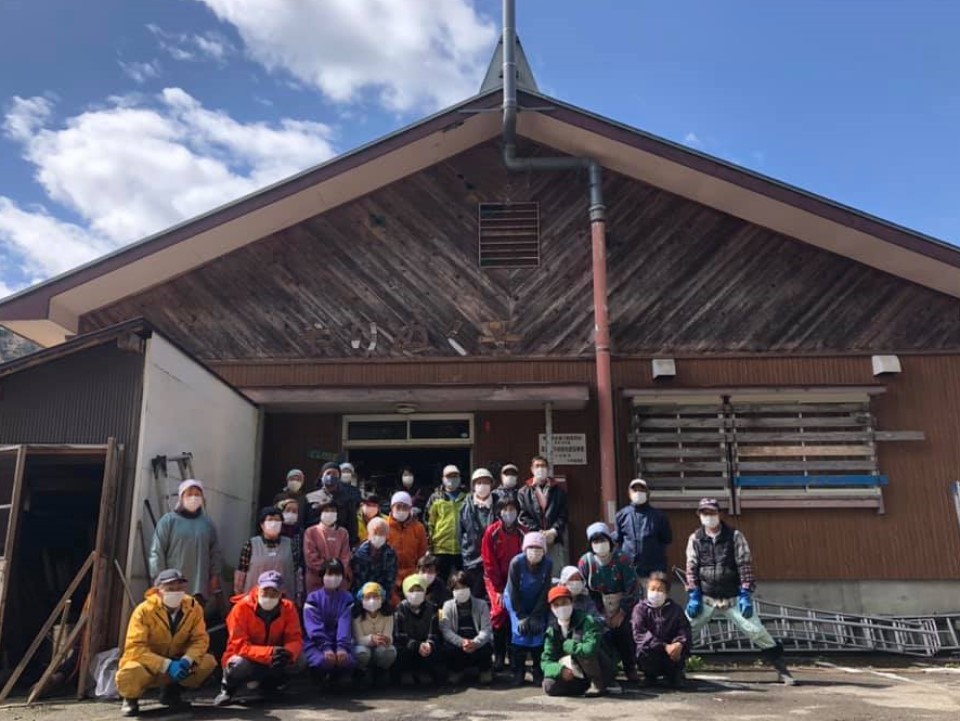
Taking down the snow protection and doing through clearing in preparation for opening the museum (18 April 2021)
We took down the snow protection and ran through cleaning on 18 April with local people. More villagers joined as we worked on these chores and helped the process efficiently. We used to share lunch after these hard works and it is sad we are not able to do so since last year. People in the Hachi village always worked together on activities that took place at the school. The school was there for the villagers to express their love to the local children. The Museum of Picture Book Art is supported by such warm heart which has been continuing to be nurtured in the village.
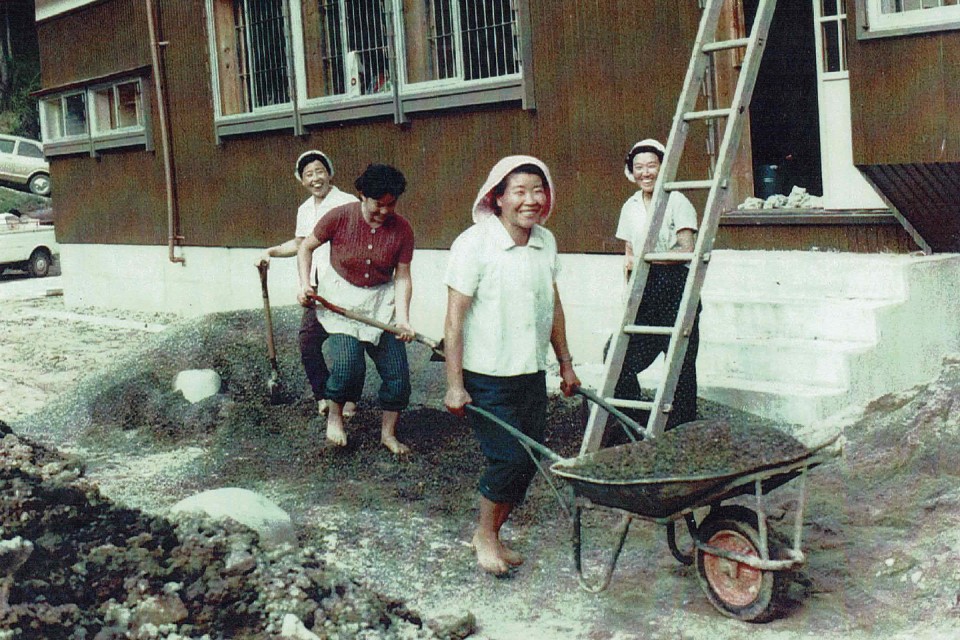
There are documents showing villagers came together to clean the school building when the refurblishment of the school building was completed. (around 1983)
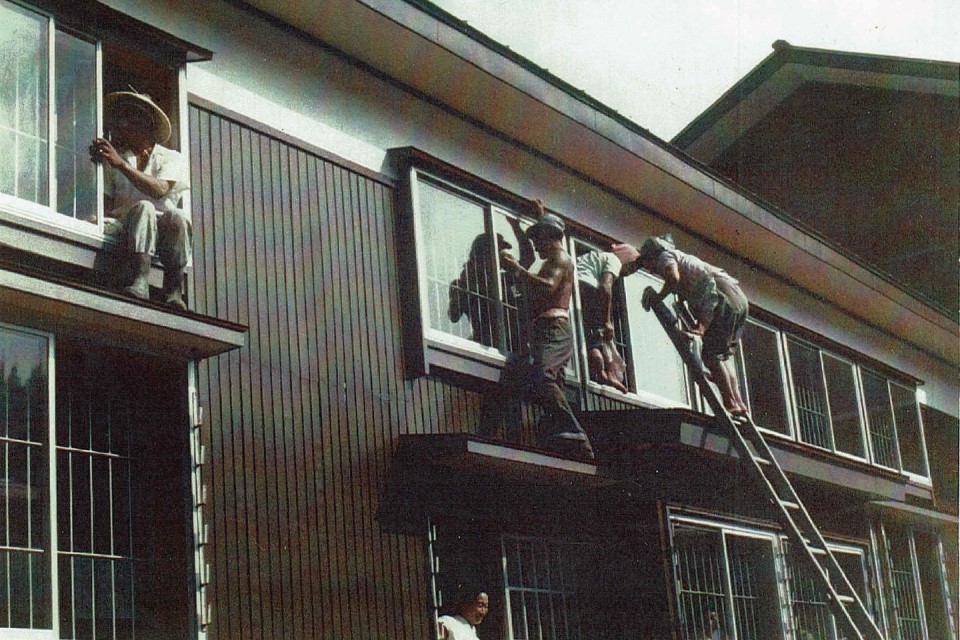
To become a museum showing a sign of living creatures
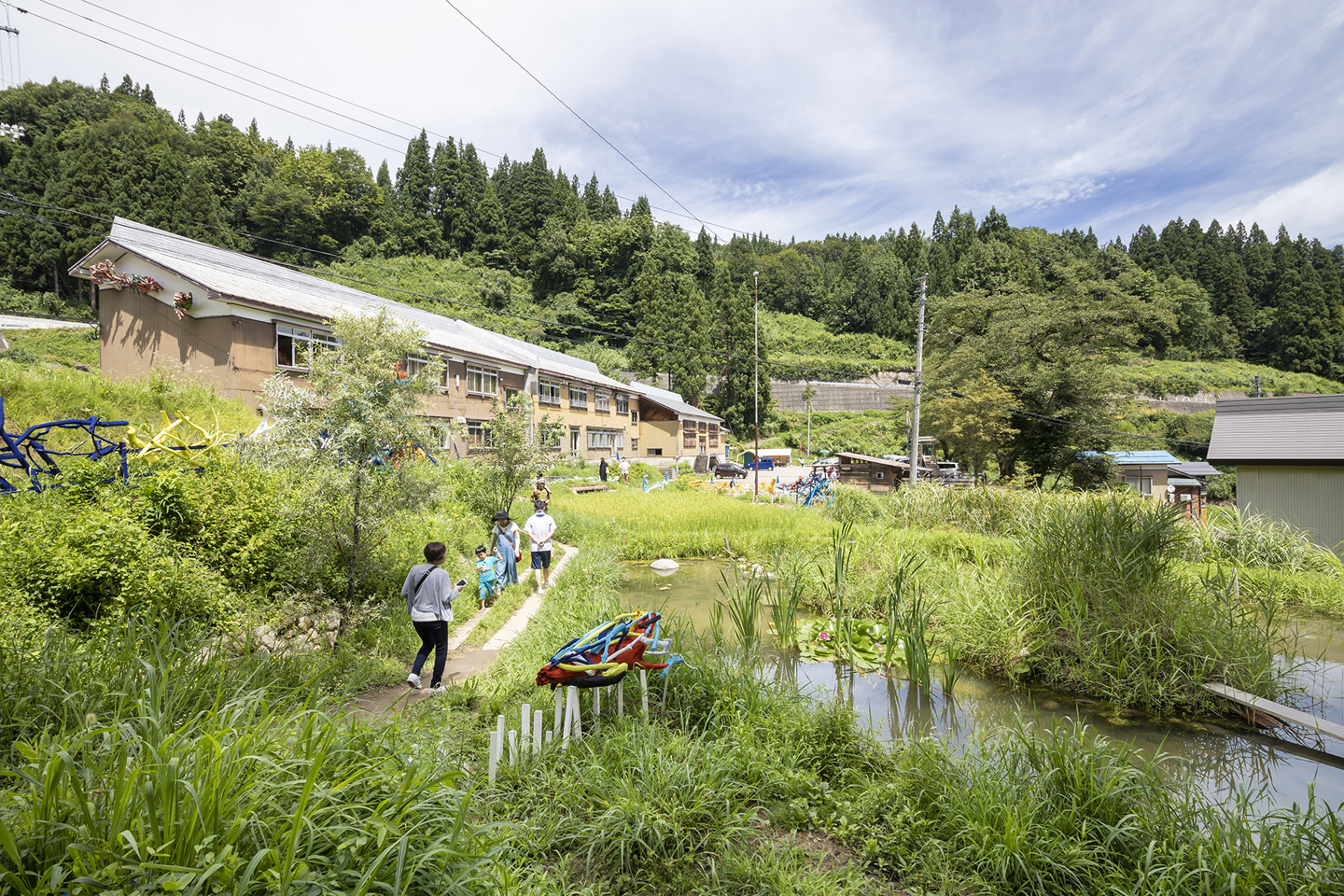
It was 2014 when we created a biotope, a space in the pond in the disused rice field for living creatures. The island in the shape of number eight (hachi) is surrounded by water and there is a small rice field adjacent to it. A small creek was added in 2018. For the last seven years we have run regular biological search as well as improved the environment to turn it into a biotope where diverse forms of living creatures can co-exist. Many precious living creatures which once became extinct due to the modernisation have returned to this biotope.
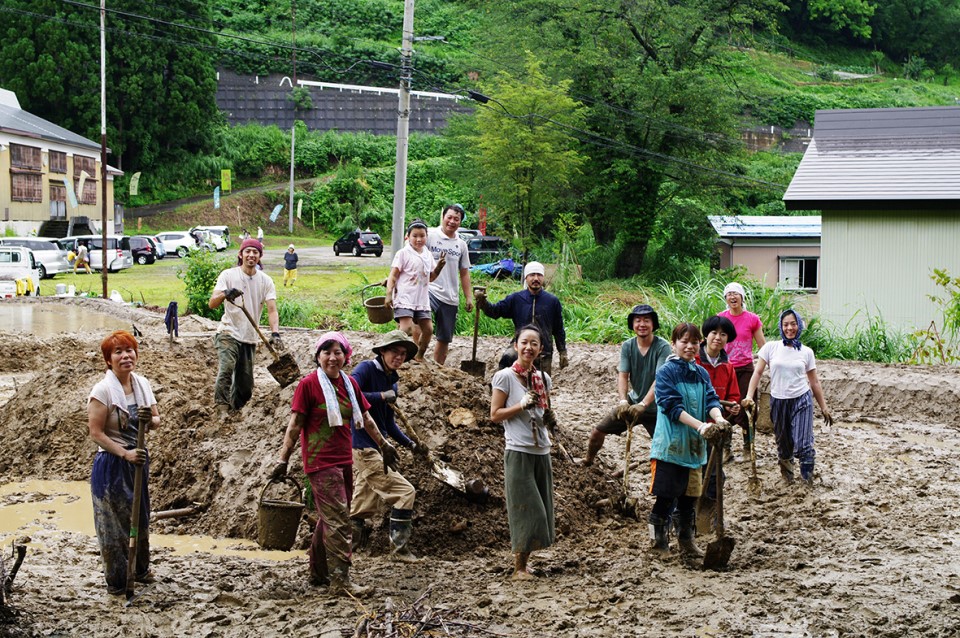
Building a biotope (2014)
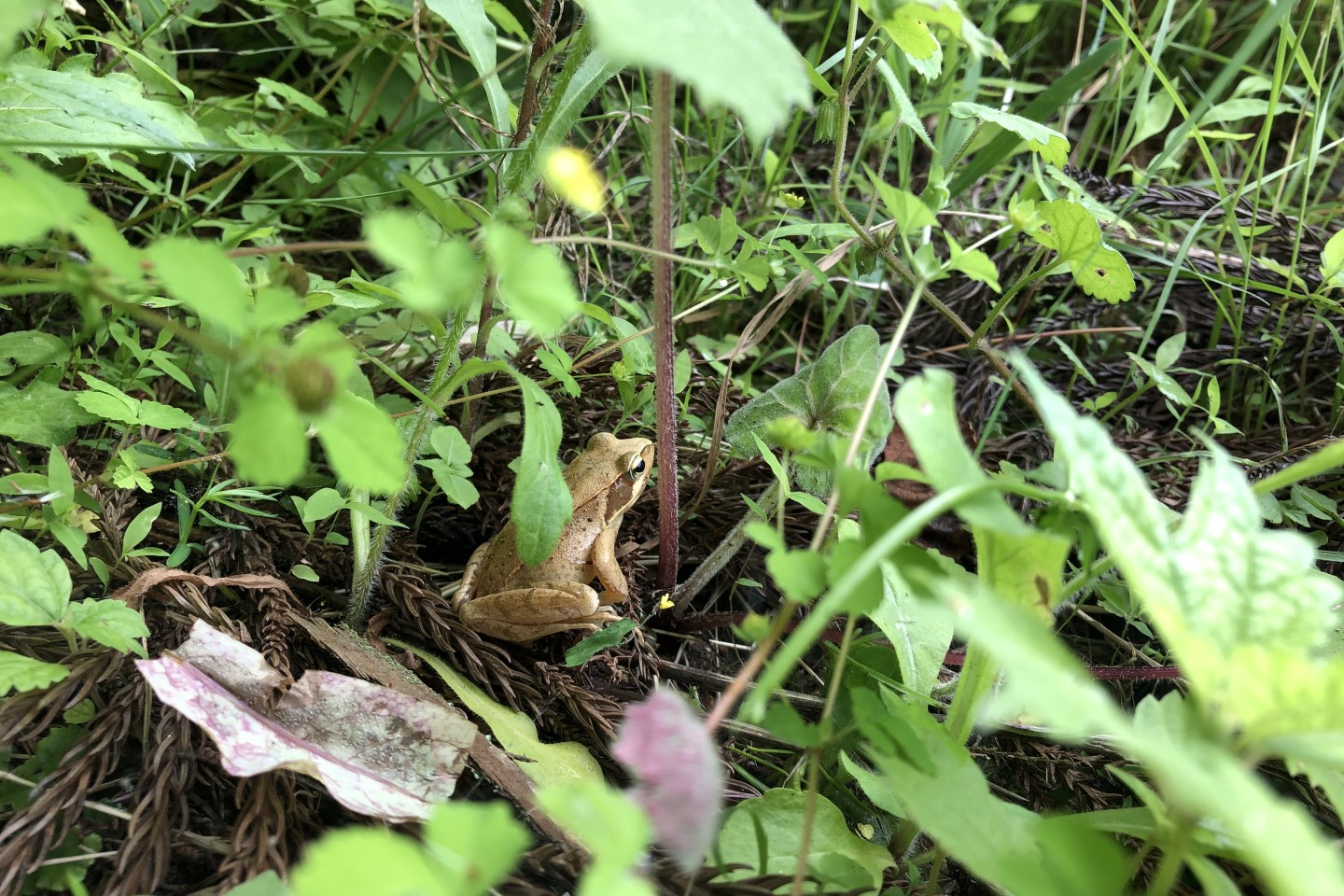
There are various kinds of frogs and dragonflies whereas we could also find salamander, black diving beetle, luciola cruciata (photo: Japanese brown frog)
A new artwork which looks like flying in the air in this entire area including the goat will be created for the next ETAT. The work using an iron as material has been under the creation with the help from KURAKAKE Junichi (Professor at the Nihon University College of Art) who is known for the work called “Shedding House”. The aspiration is to become a museum which gives a power to live to every single living creature rather than being a space prioritising how it looks by excluding living things.
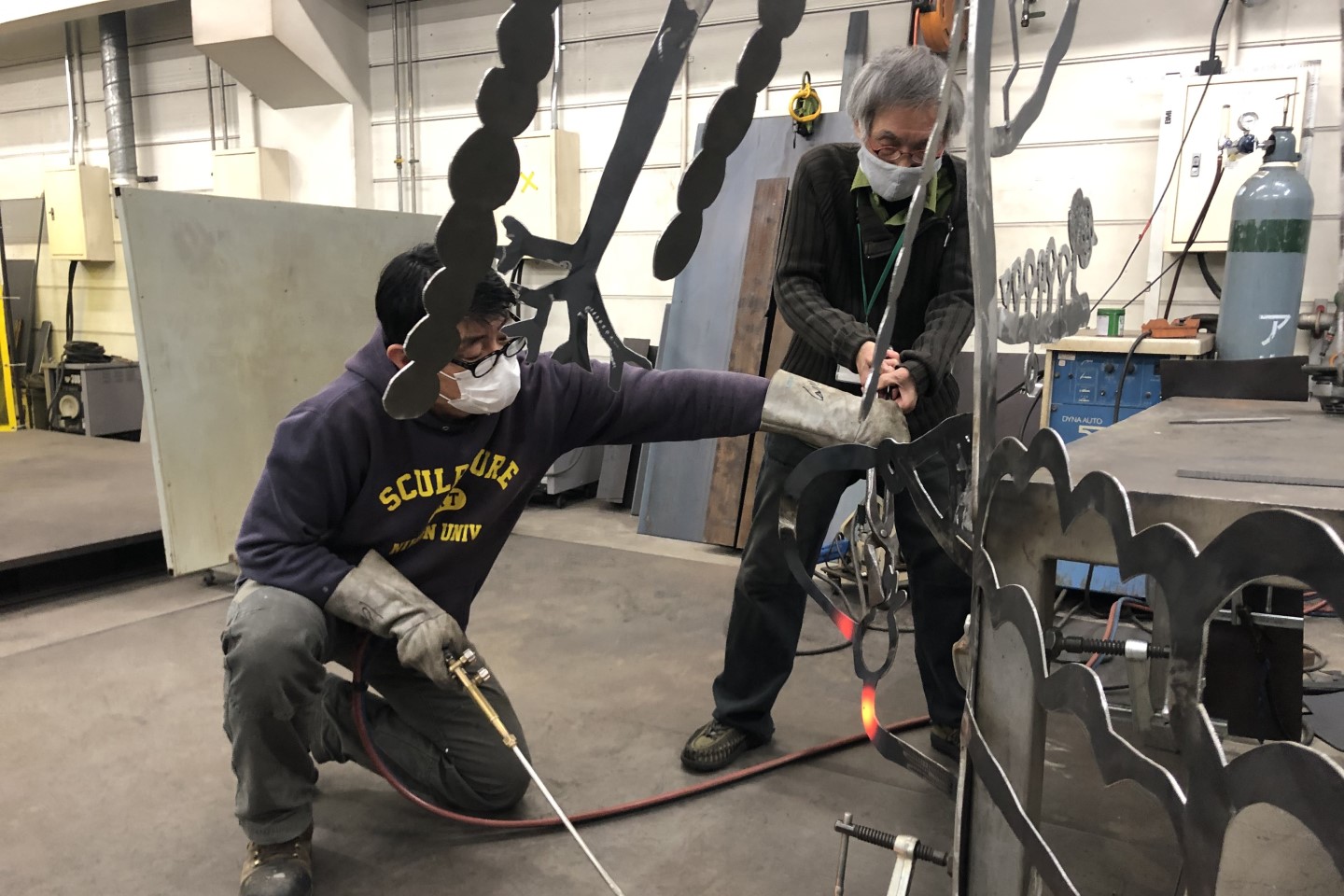
鉄作品の制作現場より、田島征三(右)・鞍掛純一(左)(日大芸術学部のアトリエ)
Picturebook "Towa-chan and a fish"『とわちゃんとシナイモツゴのトトくん』
A new picture book story about the biotope titled “Towa and Toto” will be published this summer from Hidamari-sha. TASHIMA has taken a new approach to express the world under the water and the world looked through fish’s eyes. The picture book also carries the artist’s message which hopes to raise awareness of environmental issues, including the problem of treating contaminated water at the Fukushima Daiichi nuclear power plant. You can pre-order the book at the museum prior to the publishment. The museum is currently showing the exhibition called “A fish seen by a boy and a girl seen by a fish” which include the studies of this picture book and original drawings of “Caught!”, the much talked-about picture book published last year.
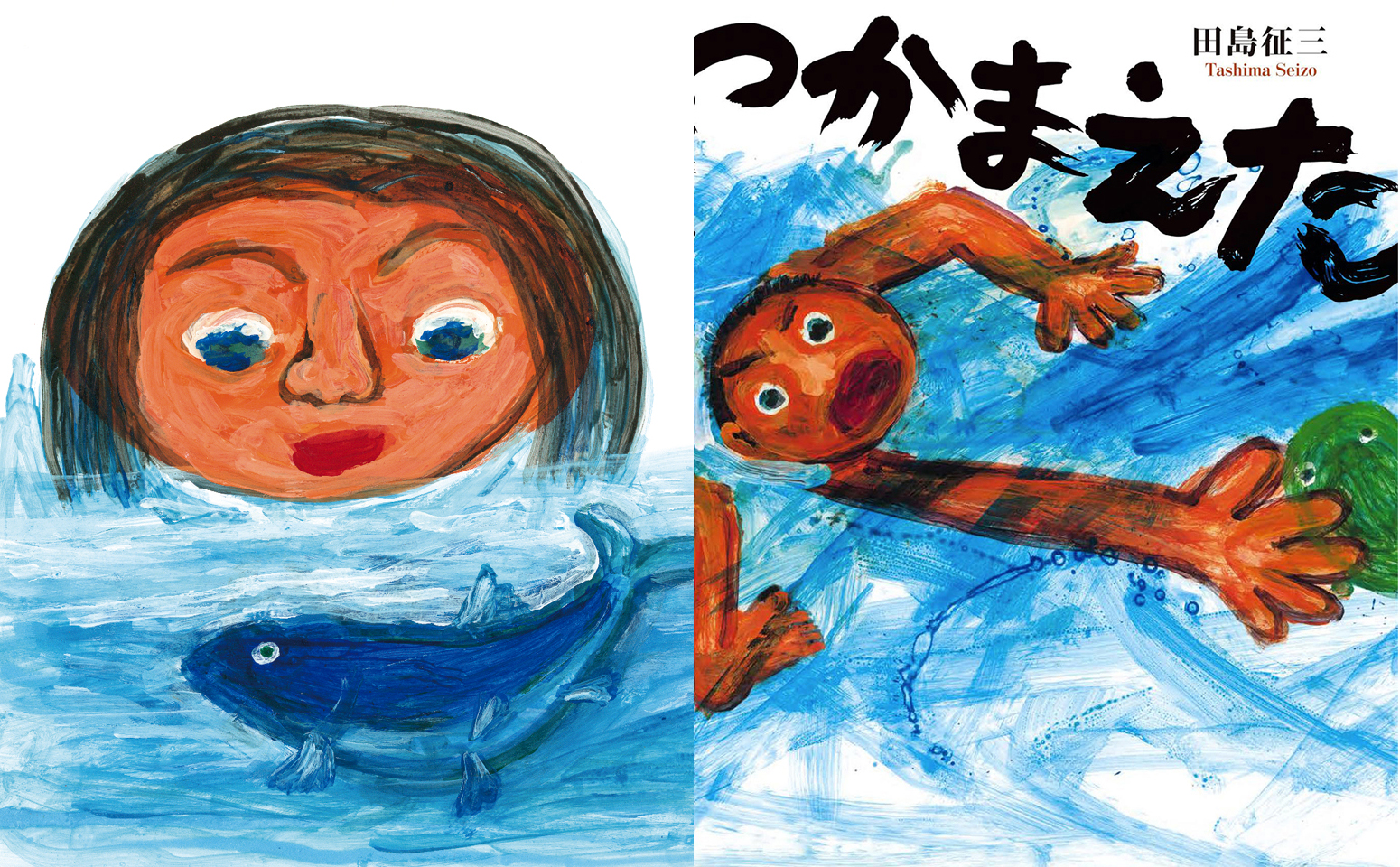
Cover of "Caught!" and reference image of the cover of "Towa and Toto"
Local ladies of the Hachi village bring lots of mountain vegetables. They would say “let’s send these to Tashima-san as it is not easy for him to visit here frequently.” “Yeah, let’s send them – these should give a bit of energy to him”. You can look forward to hearing such conversations when you visit the museum.
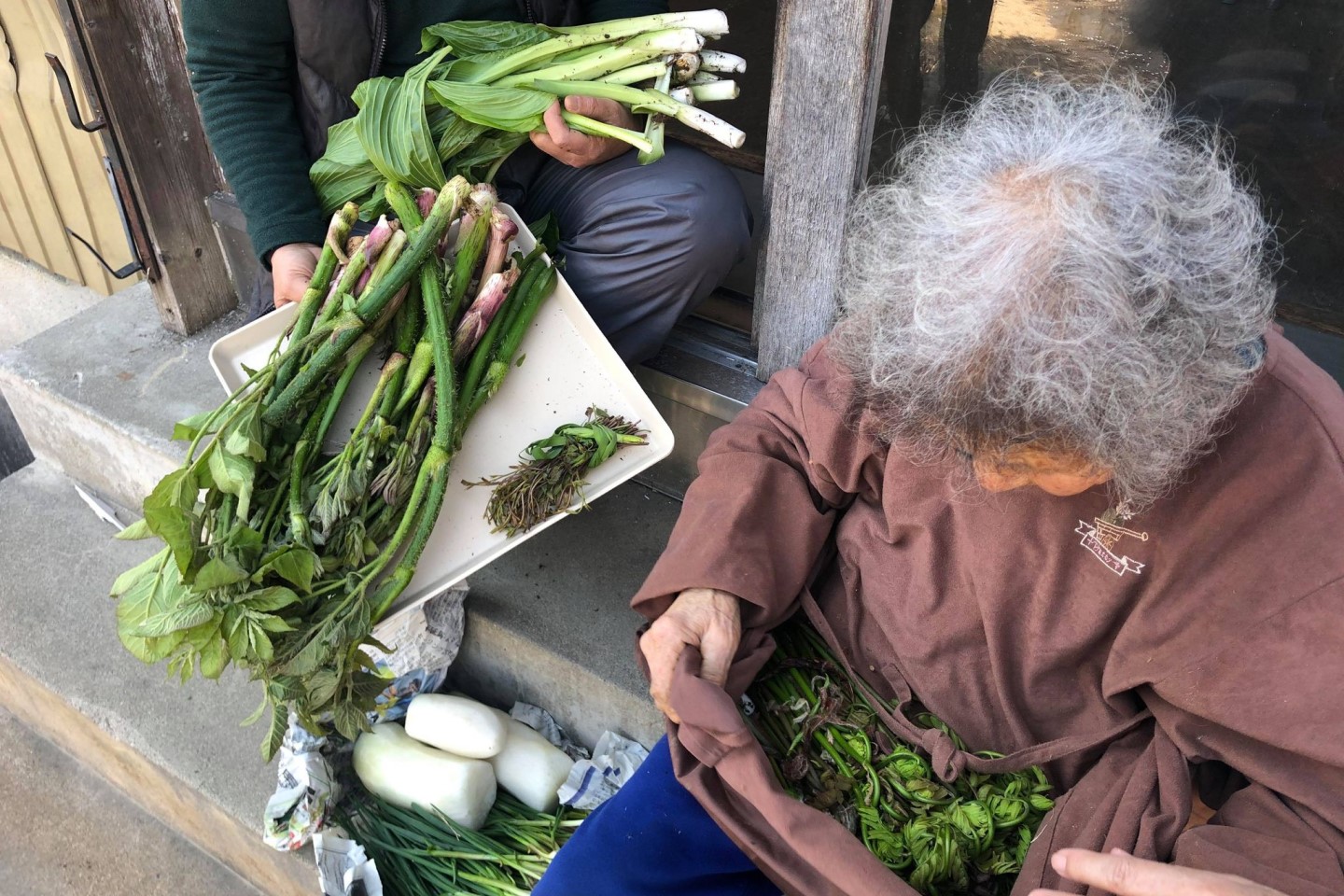
AMANO Tokiko, staff member of NPO Echigo-Tsumari Satoyama Collaborative Organisation
(Cover photo by KURAKAKE Junichi)
Articles
Latest Articles
Stay connected with the ETAT official social media to receive the latest news and event information, and the many seasonal faces of Echigo-Tsumari as well as new issue of the ETAT official media, “Art from the Land”.






